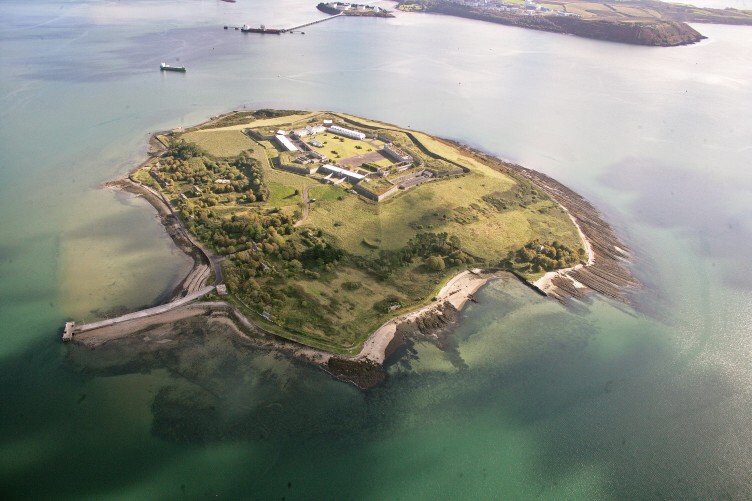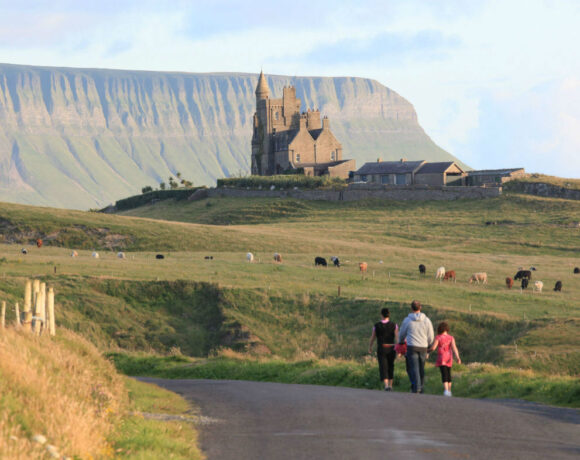Spike Island, known as ‘Ireland’s Alcatraz’, has been named Europe’s leading tourist attraction at the 2017 World Travel Awards.
The former prison was up against some of the world’s most well-known attractions including the Eiffel Tower, Roman Colosseum and Buckingham Palace, and its success makes it an unprecedented three in a row for Ireland, following victory for Titanic Belfast in 2016 and the Guinness Storehouse in 2015.
Spike Island has proven to be a top tourist success following its takeover by Cork County Council from the Department of Defence in 2010. A number of refurbishment works have been carried out on the island with an investment of €6 million, partly funded by Fáilte Ireland, resulting in the island’s first full year of operation in 2017.
Upon receiving the award, Divisional Manager of Cork County Council and Spike Island Development Company Chairman Declan Daly expressed his delight at the win, “Earlier this year Fortress Spike became Trip advisor’s number one attraction in County Cork and now the island is Europe’s Leading Tourist Attraction for 2017. This is especially rewarding considering we have so much more planned.”
Reiterating these sentiments, Chief Executive of Cork County Council Tim Lucey went on to say, “This award is recognition of the incredible dedication by a great number of people to enable Fortress Spike Island to be such a success. Cobh has recently been named one of Europe’s best cruise destinations and I am confident that Fortress Spike Island will be a go to attraction, for our cruise visitors but also our national and international tourists.”
Spike Island’s story:
The historic island has been used for centuries. It’s been a place of worship and a prison, it’s held rebels and trained soldiers. In fact, Spike Island’s history reads more like a microcosm of the whole of Ireland.
And while it’s a relatively small island lying at the entrance to Cork Harbour, it has a big history. The earliest evidence of occupation of the island dates back to the 7th century when a monastery was founded by Saint Mochuada.
It was then a strategic location used for defensive and military purposes and down through the years many different types of fortifications have been constructed here. In the 18th century the famous star fort that remains standing today was built, and it dominates much of the island. It is however best known for being an island prison, earning it the name “Ireland’s Alcatraz”.
The island was a site for holding prisoners back to Cromwell’s time but it was in at the height of the Great Famine in 1847 Spike Island became a full scale prison. It was used as a convict depot, used to house prisoners before transportation to Australia.
As the country starved homelessness and poverty increased and crime and unrest was rapid. From 1847 to it’s closure in 1883 thousands were imprisoned on the island. After the prison closed the island reverted to being used as a military base.
The facility was used as a prison again in 1916 when the captured crew of the ‘Aud’ a disguised German ship holding guns to be used in the Rising, were held there prior to being transferred to a camp in England.
It became a prison and internment camp during the War of Independence and held members of the Irish Volunteers. On April 29th 1921 three men made a daring escape. Seán MacSwiney, Tom Malone and Con Twomey escaped the island and were picked up by a boat by members of a Cork branch of the IRA based in Cobh. Richard Barrett was also held there but also managed to escape in November of 1921 along with Moss Twomey, Henry O’Mahoney, Tom Crofts, Bill Quirke, Dick Eddy and Paddy Buckley.
After the establishment of the Irish Free State the Royal Navy retained control of the territory until 11th of July 1938 when it was handed over to Ireland.
The island would remain a military base and prison under Irish rule. And not one with an unblemished record. Perhaps the most well known incident to occur under this incarnation of the island was the riot of 1st September 1985. Trouble broke out when the few officers on duty were quickly overpowered as Block A, one of the accommodation blocks, caught fire and was destroyed. Rioting prisoners armed themselves with slash-hooks and knives and took control of the pier. The Gardaí eventually were able to land in force and end the riot. The prison would finally closed its doors in 2004.
But Spike Island, with all its history and ideal location in Cork Harbour, would inevitably go through one final reinvention.
Following a €5.5 million upgrade and enhancement project, Spike Island reopened in June of last year and is now an increasingly popular historical tourist attraction with tours departing from Cobh bringing tourists to explore the fort and its fascinating history.













